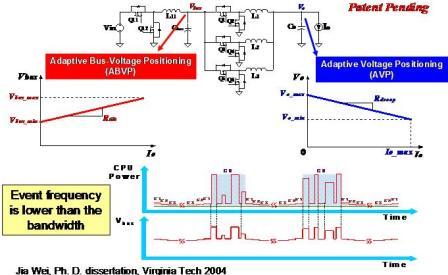LIBRARY
Light Load Efficiency Enhancement for Laptop (2004)

The unique issue of the power management in the laptop is the light load efficiency, which is crucial to the battery life. About 90% of the time, the mobile CPU is in various stages of "sleep mode" to save power consumption. Therefore, the light load mode efficiency is very important. It was understood that 50% of energy consumption in the computer can be saved by simply improving the light load efficiency. Taking advantage of the two-stage power architecture, some innovative control strategies have been devised to further improve VR light-load efficiency and prolong the battery life by 5~10%. With these unique strategies, the number of working phases of the second stage is dynamically adjusted with the load current, the intermediate bus voltage is adaptively controlled at the optimum voltage points corresponding to different load current, and the switching frequency of the second stage is reduced proportionally with the load current.
Intel has specified the strategy of shading phases according to the load condition as the standard power management for its mobile microprocessors.























































































